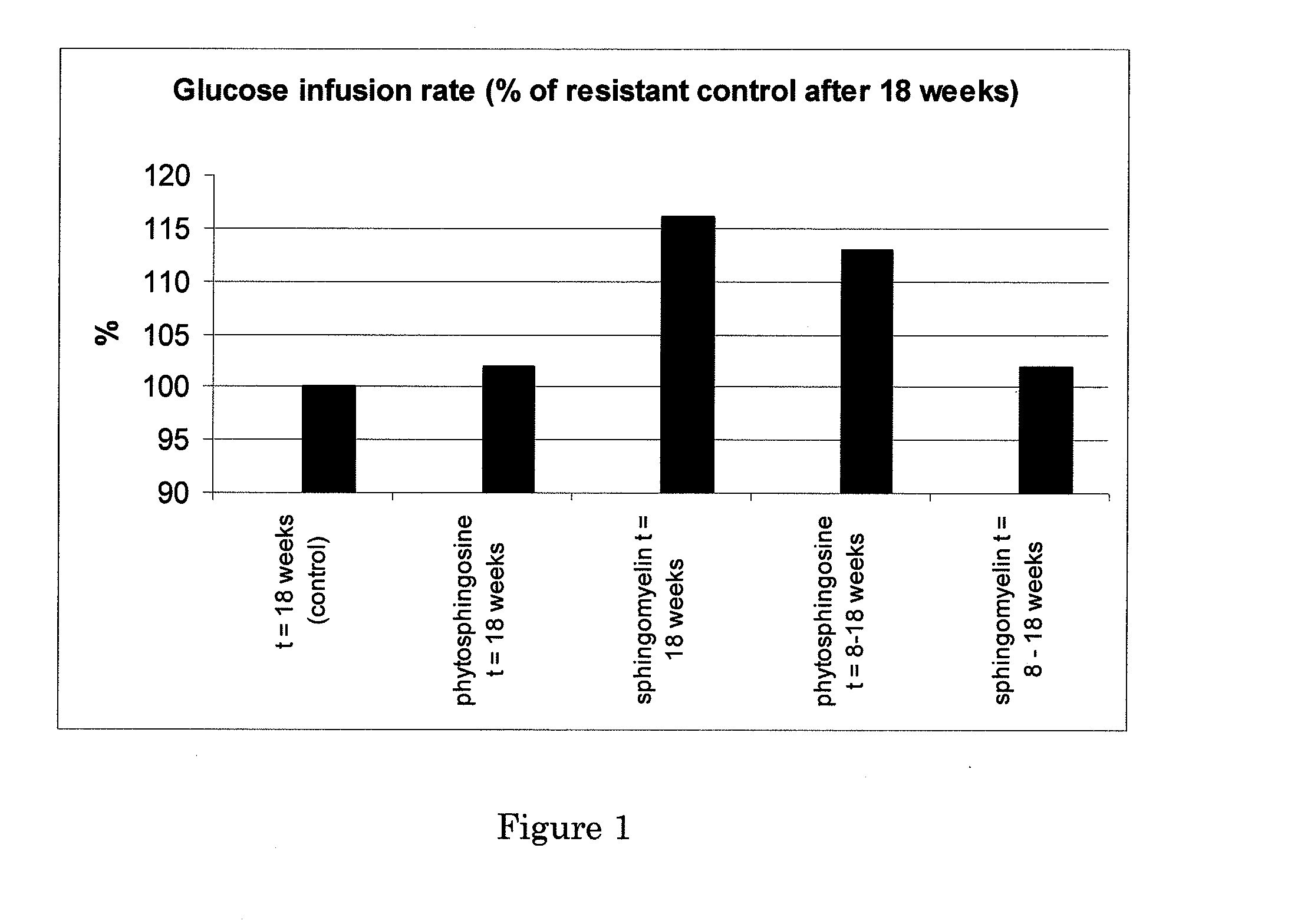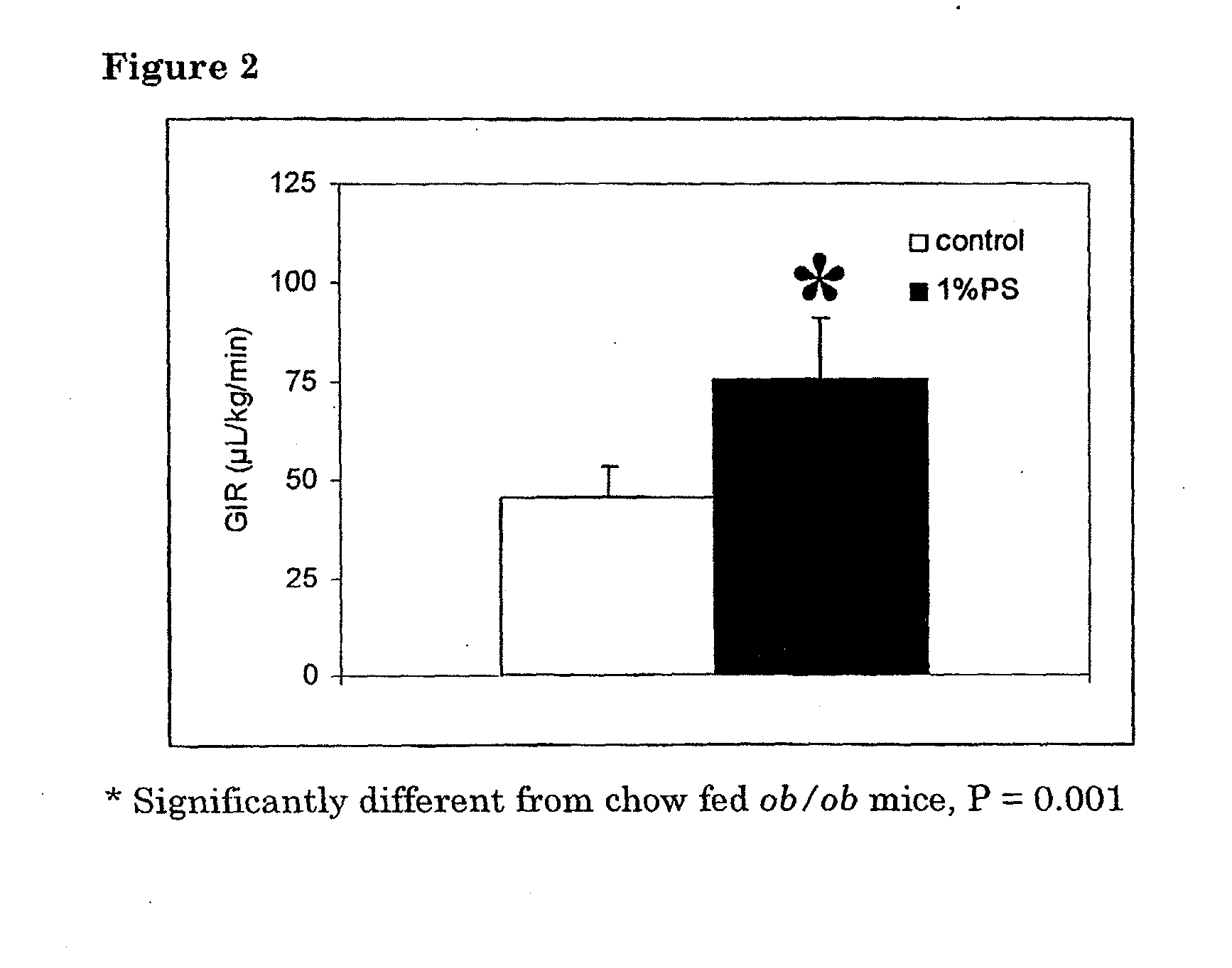Use of sphingolipids in the treatment of type 2 diabetes mellitus, insulin resistance and metabolic syndrome
a technology of sphingolipids and sphingolipids, which is applied in the field of preparations for the treatment and prevention of insulin resistance and type 2 diabetes mellitus, can solve the problems of disproportionately expensive disease, marked decrease in life expectancy, and malfunction of major metabolic pathways, and achieves increased activity, long half-life, and resistance to degradation
- Summary
- Abstract
- Description
- Claims
- Application Information
AI Technical Summary
Benefits of technology
Problems solved by technology
Method used
Image
Examples
example 1
Insulin Resistance Measured with the Hyperinsulinemic Euglycemic Clamp
Diagnosing Insulin Resistance
[0161]The “gold standard” for insulin resistance is a test called the hyperinsulinemic euglycemic clamp study. It is a complicated and expensive study in which insulin and glucose is infused intravenously at several different doses to see what levels of insulin control different levels of glucose. Essentially, the method of Koopmans et al., 2001 and Voshol et al., 2001.
Insulin Resistant Mice
[0162]Male ApoE3*Leiden mice were fed with a high fat, high fructose diet (24% casein, 17% corn starch, 14% cellulose, 1% cholesterol, 24% bovine lard, 20% fructose; all w / w). After 8 weeks all mice in this group were moderately insulin resistant and were strongly insulin resistant after 18 weeks. Two parallel groups of mice (n=8) were fed for another 10 weeks the same diet, but containing 0.3% (w / w of the dry food) of either egg sphingomyelin or phytosphingosine.
[0163]In another parallel experiment...
example 2
Treatment of ob / ob Mice with 1% Phytosphingosine Improves Insulin Sensitivity
[0168]20 female ob / ob mice (C57B1 / 6 background) were obtained from Charles River, The Netherlands and were acclimatized for a period of 2 weeks within the TNO-facilities. After a 4 hour fast, blood was drawn by tail bleeding and the animals were randomized according to body weight and plasma glucose levels. Table 1 shows that at starting point both groups had equal body weights, glucose levels and insulin levels.
[0169]The mice were put on a regular chow diet (control) or regular chow supplemented with 1% phytosphingosine (1% PS). After three weeks of treatment a blood sample was drawn after a 4 hours fast and body weight was determined. Table 1 shows that the animals in the control group tend to have a higher body weight during the study, but this did not reach statistical significance. The 1% PS treated mice maintained their initial body weight. Glucose levels were increased in time only for control mice, ...
PUM
 Login to View More
Login to View More Abstract
Description
Claims
Application Information
 Login to View More
Login to View More - R&D
- Intellectual Property
- Life Sciences
- Materials
- Tech Scout
- Unparalleled Data Quality
- Higher Quality Content
- 60% Fewer Hallucinations
Browse by: Latest US Patents, China's latest patents, Technical Efficacy Thesaurus, Application Domain, Technology Topic, Popular Technical Reports.
© 2025 PatSnap. All rights reserved.Legal|Privacy policy|Modern Slavery Act Transparency Statement|Sitemap|About US| Contact US: help@patsnap.com



